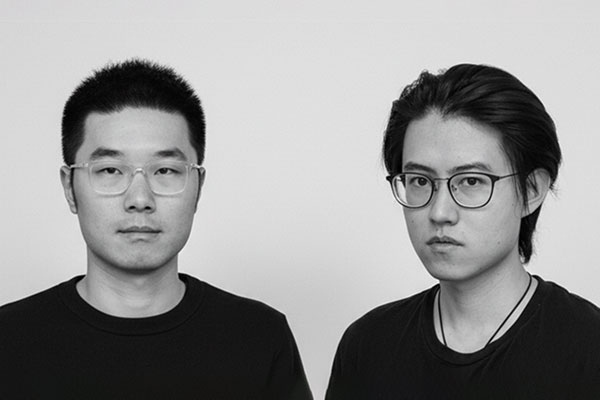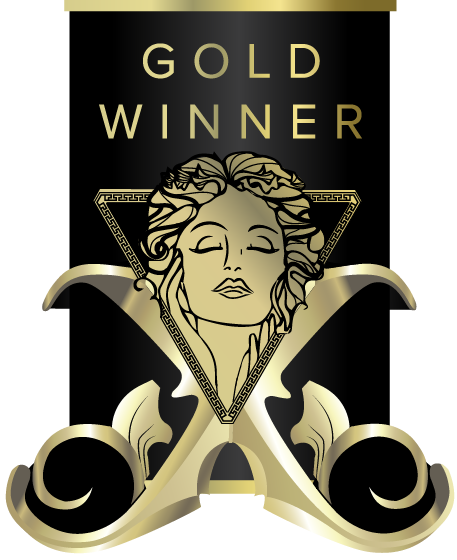
Interview
Chen Yang & Liwei Guo
1 Congratulations on winning the MUSE Design Awards! Can you introduce yourself and share about what inspired you to pursue design as a career?
We are Chen Yang and Liwei Guo, Columbia University GSAPP alumni with years of experience in architectural practice. Our work explores the intersection of nature and architecture, with a focus on designing spaces that are inclusive, affordable, and restorative. We are particularly drawn to projects that address social issues such as access to housing, community resilience, and public space equity, because we believe design has a responsibility to serve vulnerable groups as much as it serves aesthetics. Our inspiration comes from a shared belief that architecture can be both a rational framework and a poetic gesture, balancing functionality with emotional depth.
2 What does being recognized in the MUSE Design Awards mean to you?
This recognition affirms our effort to use design as a tool for positive social impact. It demonstrates that projects advocating inclusivity, affordability, and environmental sensitivity can also be celebrated as beautiful and innovative. For us, this award is a reminder to keep designing with empathy and a deep sense of responsibility to the communities that need thoughtful spaces the most.
3 How has this achievement impacted your career, team, or agency, and what opportunities has it brought so far?
This award has amplified our voices as a collaborative duo and opened new opportunities for dialogue with clients, colleagues, and peers. It has strengthened our professional network, encouraged deeper discussions on integrating nature into design, and inspired our team to experiment more boldly with their own ideas.
4 What role does experimentation play in your creative process? Can you share an example?
Experimentation is at the heart of our practice. Together, we test new design methods, from parametric façade studies to material prototypes. In one past project, we used computational tools to generate hundreds of variations for an indoor structure, eventually arriving at a solution that balanced aesthetics, visual highlights, and visitor circulation—achievable only through iterative collaboration and open-ended exploration.
5 What's the most unusual source of inspiration you've ever drawn from for a project?
Years ago, while traveling in Scotland, Chen witnessed one of the most beautiful rainbows he had ever seen. That moment became the conceptual spark for our “Nuclear Bomb Memorial” design, a project symbolizing rebirth, peace, and the resilience of nature. The memorial reimagined a place of tragedy into one of reflection and renewal—and it went on to win several international design awards. This experience taught us that inspiration often arises from moments of wonder, and that architecture has the power to transform pain into hope.
6 What’s one thing you wish more people understood about the design process?
That design is not just about form; it is about shaping social relationships, creating dignity for users, and addressing inequalities. Good design takes time, requires listening to diverse voices, and demands balancing priorities such as affordability, beauty, and sustainability. The best results emerge from an iterative process that is both rational and compassionate.
7 How do you navigate the balance between meeting client expectations and staying true to your ideas?
We see collaboration as an ongoing conversation rather than a compromise. By working closely together, we first align our perspectives and then present a unified design vision to the client—one that addresses their needs while pushing the project toward something meaningful. This process often helps us translate abstract client goals into a design language that is both clear and ambitious.
8 What were the challenges you faced while working on your award-winning design, and how did you overcome them?
Our biggest challenge was translating progressive educational ideology into spatial design—creating environments that are open, collaborative, and nurturing for all students. Liwei focused on the structural framework to maximize flexibility and adaptability, while Chen explored materiality to ensure warmth and inclusivity. Together, we made design decisions that aligned with pedagogical goals, supported diverse learning needs, and fostered a sense of belonging for students from all backgrounds.
9 How do you recharge your creativity when you hit a creative block?
We often go outdoors to reconnect with nature—hiking, sketching, and brainstorming together. We also share a love for photography, which encourages us to slow down, notice details, and interact with people we meet along the way. These experiences help us understand how others live, how they use public spaces, and what brings them joy or comfort. Observing and documenting everyday life often sparks new ideas and reminds us to design for real human experiences rather than abstract concepts.
10 What personal values or experiences do you infuse into your designs?
We bring curiosity, empathy, and social responsibility into every project. We believe architecture should restore dignity, foster connection, and remain accessible to people of all incomes and abilities. By blending natural systems with the built environment, we strive to create spaces that are not only functional but also healing and inclusive.
11 What is an advice that you would you give to aspiring designers aiming for success?
Be bold enough to care about real issues—affordability, sustainability, and equity—and let those values guide your design decisions. Build a strong foundation of skills, but also seek collaborators who challenge and inspire you. Remember that design is a collective endeavor, and diverse voices always lead to richer, more meaningful outcomes.
12 If you could collaborate with any designer, past or present, who would it be and why?
We would love to collaborate with Lina Bo Bardi. Her work seamlessly blended architecture, art, and social context, creating spaces that were playful yet deeply rooted in culture. We admire her ability to honor both nature and people—a philosophy that strongly resonates with our own.
13 What's one question you wish people would ask you about your work, and what's your answer?
How do you know if a project truly serves its community? For us, it is when people use the space in ways we never anticipated—whether for play, gathering, protest, or celebration—that we know it has succeeded. A good design should be flexible enough to hold many lives and stories, not just the ones originally imagined.


